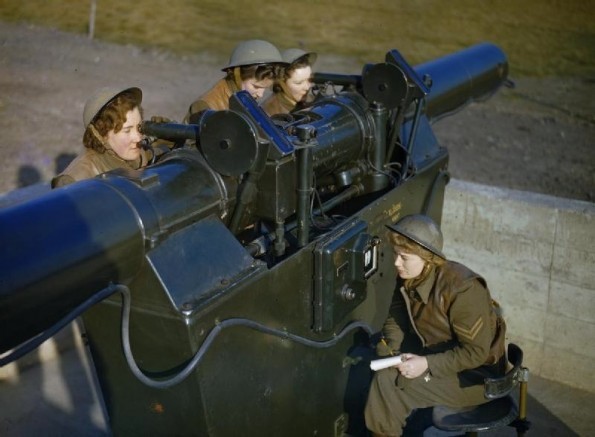Women played important roles during World War II, both at home and in uniform. World War II involved global conflict on an unprecedented scale; the absolute urgency of mobilising the entire population made the expansion of the role of women inevitable. Not only did they give their sons, husbands, fathers, and brothers to the war effort, they gave their own time, energy, and for some even their lives.
Let’s have a look at the roles of women from various nations that took part in World War II, both Allied and Axis.
When Britain went to war, as in World War I, previously forbidden job opportunities opened up for women. They played a vital part in this country’s success in World War II.
In Britain, women were essential to the war effort, in both civilian and military roles. The contribution by civilian men and women to the British war effort was acknowledged with the use of the term “Home Front” to describe the battles that were being fought on a domestic level with rationing, recycling, and war work, such as in munitions factories and farms, which allowed more young men to join the military.
At first, only single women aged 20-30 were called up, but by mid-1943, almost 90 per cent of single women and 80 per cent of married women were working in factories, on the land or in the armed forces.
- 640,000 women served in the armed forces.
- 55,000 served with guns and provided essential air defence.
- 80,000 served in the Land Army.
Plus there were many more in various other roles such as flying unarmed aircraft, driving ambulances or working behind the enemy lines as secret agents under the SOE (Special Operations Executive). These women were usually parachuted into occupied France or landed in special Lysander planes. Their work was exceptionally dangerous as just one mistake could lead to capture, torture and death.
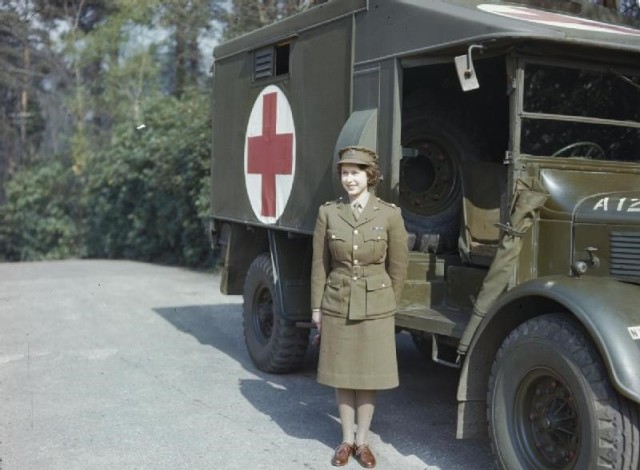 Princess Elizabeth (now the Queen) in the Auxiliary Territorial Service, April 1945.
Princess Elizabeth (now the Queen) in the Auxiliary Territorial Service, April 1945.
Perhaps the service branch with the most exposure would be the Auxiliary Territorial Service (ATS). The women manning the anti-aircraft guns were known as Ack Ack Girls. An order from Winston Churchill forbade the ATS ladies from actually firing an AA gun, as he felt that they would not be able to cope with the knowledge that they might have shot down and killed young German men. Oddly, though, they were allowed to track a plane, fuse the shells and be there when the firing cord was pulled, thus having a pivotal role in the act.
Jobs undertaken by women during the war included:
- Mechanics
- Engineers
- Tank drivers
- Building ships
- Working in factories – making bombs and aircraft parts
- Driving fire trucks
- Plumbers
- Ambulance drivers
- Nurses
American Women in World War II
The United States quickly committed itself to total war after the Japanese attack on Pearl Harbor. That commitment included utilising all of America’s might — women included.
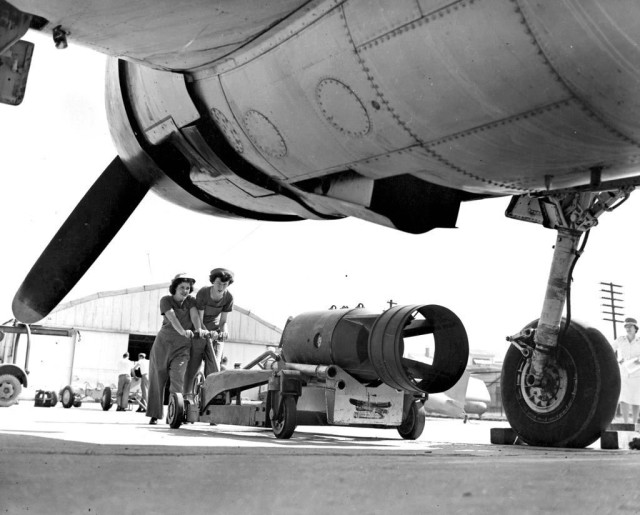
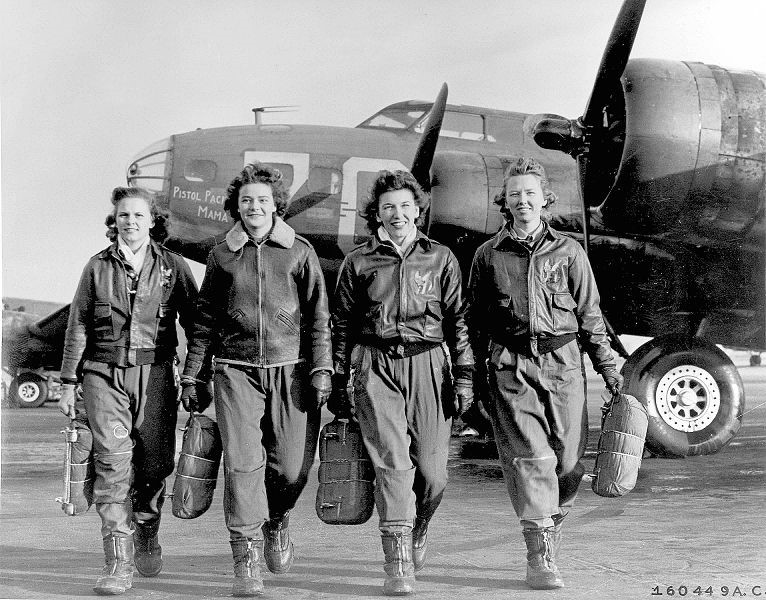 Two female soldiers of the Marine Corps Women Reserve prepare to load and arm depth charges (left) and women pilots leaving their B-17, “Pistol Packin’ Mama”, at Lockbourne AFB, Ohio (right).
Two female soldiers of the Marine Corps Women Reserve prepare to load and arm depth charges (left) and women pilots leaving their B-17, “Pistol Packin’ Mama”, at Lockbourne AFB, Ohio (right).
Nearly 350,000 American women served in uniform, both at home and abroad, volunteering for the newly formed Women’s Army Auxiliary Corps (WAACs, later renamed the Women’s Army Corps), the Navy Women’s Reserve (WAVES), the Marine Corps Women’s Reserve, the Women Airforce Service Pilots (WASPS), the Army Nurses Corps, and the Navy Nurse Corps.
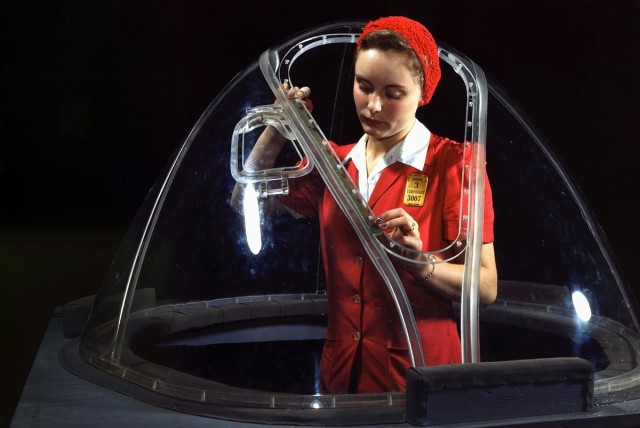 This woman in a glass house is putting finishing touches on the bombardier nose section of a B-17F navy bomber in Long Beach, California, She’s one of many capable female workers in the Douglas Aircraft Company plant
This woman in a glass house is putting finishing touches on the bombardier nose section of a B-17F navy bomber in Long Beach, California, She’s one of many capable female workers in the Douglas Aircraft Company plant
(Alfred Palmer/OWI/LOC).
Soviet Women in World War II
Soviet women played a major role in World War II. In contrast to the Germans, the Soviets mobilised their women early, bypassing the “auxiliary” stage entirely. Many Soviet women were without uniforms and thus considered de facto partisans.
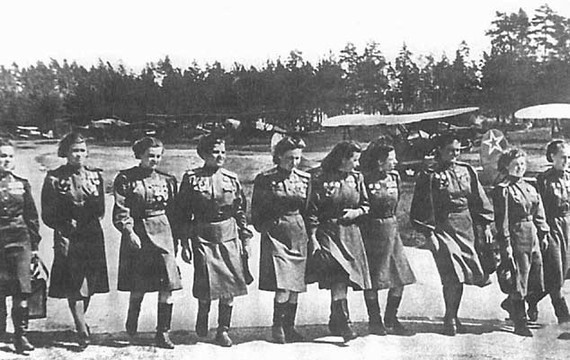 The women of the 588th Night Bomber Regiment, with their aircraft in the background
The women of the 588th Night Bomber Regiment, with their aircraft in the background
About 800,000 women served in the Red Army during World War II, and over half of these were in front-line duty units. Many were trained in all female units. About a third of the total number of women serving were given additional instruction in mortars, light and heavy machine guns, or automatic rifles. Another 300,000 served in AA units.
Among the most widely-known units were the Night Witches, the female military aviators of the 588th Night Bomber Regiment, known later as the 46th “Taman” Guards Night Bomber Aviation Regiment, of the Soviet Air Forces.The regiment was formed by Colonel Marina Raskova and led by Major Yevdokia Bershanskaya.
German Women in WWII
Hitler was very clear about the role of women under his Nazi regime. This role was that they should be good mothers bringing up children at home while their husbands worked.
But the war situation changed things significantly and certain Nazi regime ideologies were quickly abandoned out of necessity. In 1944-45 more than 500,000 women were volunteer uniformed auxiliaries in the German armed forces (Wehrmacht).
The German women serving with AA units learned all aspects of the guns, but were forbidden to fire them. Hitler and his advisers firmly believed that public opinion would never tolerate these auxiliaries firing weapons. Indeed, German propaganda warned all women in the auxiliaries not to become “gun women” (flintenweiber). “Gun women” was the contemptuous German term for Soviet women who carried or fired weapons.
“In November 1944, Hitler issued an official order that no woman was to be trained in the use of weapons. The only exception was for women in the remote areas of the Reich which could be easily overrun by the Soviets. In one such area, a twenty-two-year-old Pomeranian woman, Erna, was awarded the Iron Cross (second class) when she, together with a male sergeant and private destroyed three tanks with bazookas. Indeed, the German propaganda suggested that the bazooka was the most feminine of weapons. The Freikorps was formed in 1945 and trained in the use of bazookas, hand grenades, and automatic rifle.” (From an insert from the Journal of Military History, Vol. 57, No. 2 (Apr., 1993), pp. 301-323.)
Elsewhere in Europe…
Yugoslavia
About 100,000 women served with 600,000 men in Tito’s Yugoslav National Liberation Army. Its propaganda stressed its dedication to women’s rights and gender equality and used the imagery of traditional folklore heroines. After the war, women were relegated to traditional gender roles, but Yugoslavia was unique as its historians paid extensive attention to women’s roles in the resistance.
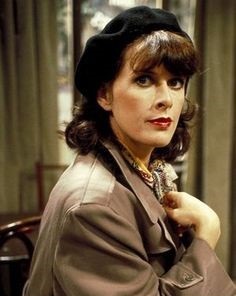
Many women also served in the resistances of France, Italy, and Poland.
The French female resistance have become part of popular culture. One of the most notable examples of this is the character of Michelle Dubois from the BBC sitcom “Allo Allo!”
Often while we learn about the biggest and best known wars of human history, we miss out our women as if they have been airbrushed out of history or blended into the bigger picture.
We hope this article will make a change, if only small, in the perception of women and their roles in this dark hour of human history. The women portrayed here have given a great deal to represent and protect their homelands, and this should certainly be acknowledged.
